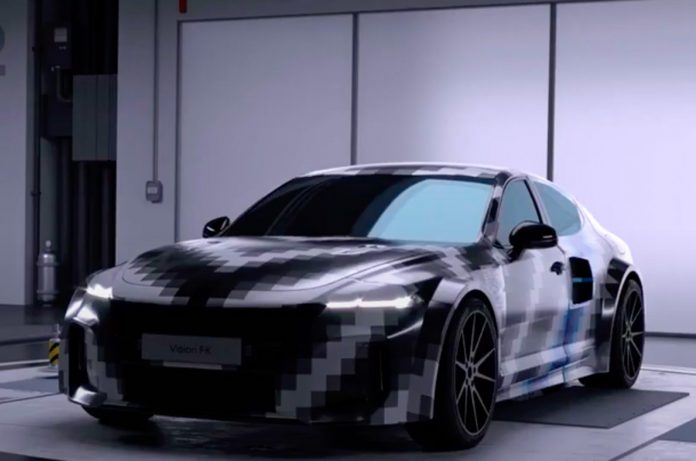Hyundai will seek to “popularize” hydrogen by 2040 with a number of initiatives aimed at positioning fuel as an alternative to full battery electrification, and not just in the private vehicle sector.
Following yesterday’s widespread commitment to making its vehicle fleets fully electric in Europe by 2035 and globally by 2040, Hyundai has committed to mass production of hydrogen fuel cell electric cars and commercial vehicles (FCEVs).
In addition, the company estimates that FCEVs will be similar in price to battery EV equivalents by 2030.
At the top of the hydrogen charge in the passenger area will be a new hybrid sports car, which will be referred to as the Vision FK in the concept phase. Introduced as part of Hyundai’s hydrogen strategy presentation, it is expected to deliver more than 671 horsepower, accelerate from 0 to 100 km / h in less than four seconds and achieve a range of more than 373 miles.
Unusually, the Vision FK combines its hydrogen fuel cell stack with a battery-electric powertrain developed by Rimac that drives the rear wheels, which would make it the first car to use both systems, provided production remains unchanged.
Hyundai has already suggested that future models from the N-Performance division would use hydrogen propulsion solutions, and the Vision FK concept is the first physical sign that they will in fact “use a combination of both battery and hydrogen power sources”, as suggested by N Boss Albert Biermann earlier this year.
No production date has been given for the car, nor has Hyundai given any indication of the potential for such a system to be introduced into other models, but given recent sightings of a prototype for the upcoming Ioniq 5 N, it is clear that both the Battery as well as hydrogen power will be vital to the brand’s electrification plans.
In fact, a brand spokesman at the Munich auto show yesterday said: “We are relying on both battery and fuel cell technologies. Electric vehicles like the Ioniq 5 can cover long journeys with short charging times,” as can FCEVs, which means that “they don’t need large ones heavy batteries. “
Hyundai had previously confirmed plans to extensively update the existing Nexo crossover – one of only two mainstream passenger-electric vehicles on the market – in 2023 before launching two new standalone FCEVs by 2025 that shift the focus to hydrogen.
The third-generation fuel cell stack – after the first in the small series SUV ix35 from 2013 and the second iteration in today’s Nexo – will be available in two power levels: 134 hp and 268 hp, with the former being said to be 30%. smaller than the system currently in use. According to Hyundai, it will therefore be usable in a large number of vehicle types without any problems, while the 200 kW version is aimed exclusively at commercial applications.
More importantly, the third generation stack promises a significantly longer lifespan compared to today’s system; Hyundai estimates that the Nexo’s current powertrain can reach 5,000 hours, or 100,000 miles, but the new system is said to increase those numbers by 50 to 100%, with the “high durability” versions reaching around 310,000 miles – almost that Double the warranty period of a Hyundai model with a combustion engine.

